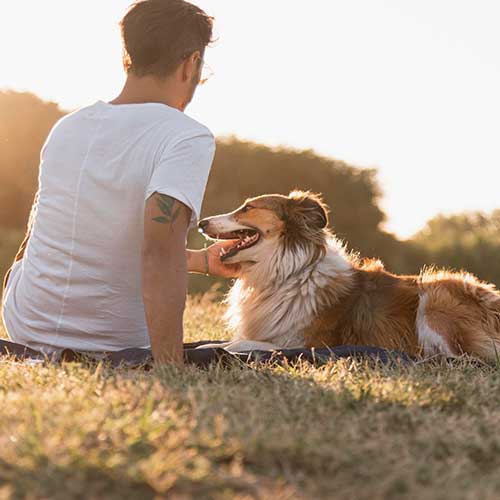Introduction
Choosing the best pet toys for dogs is essential for their physical health, mental stimulation, and overall well-being. With a vast array of toys available on the market, it can be challenging to determine which ones are suitable for your furry friend. This comprehensive guide will help you understand the factors to consider when selecting pet toys for dogs, ensuring your pet remains happy, healthy, and entertained.
Understanding Pet Toys for Dogs

The Importance of Pet Toys for Dogs
Pet toys for dogs play a crucial role in their development and happiness. They provide numerous benefits, including:
- Physical Exercise: Helps keep dogs active and healthy.
- Mental Stimulation: Engages their minds and prevents boredom.
- Behavioral Training: Can be used to teach and reinforce good behavior.
- Bonding: Strengthens the bond between pets and their owners.
Types of Pet Toys for Dogs
There are various types of pet toys for dogs, each serving different purposes:
- Chew Toys: Designed for dogs to chew on, helping with dental health and teething.
- Interactive Toys: Stimulate a dog’s mind and often involve solving puzzles or obtaining treats.
- Fetch Toys: Encourage physical activity through throwing and retrieving.
- Plush Toys: Soft toys that dogs can cuddle with and carry around.
- Tug Toys: Used for playing tug-of-war, promoting physical exercise and bonding.
Factors to Consider When Choosing Pet Toys for Dogs
Size and Breed of Your Dog
The size and breed of your dog play a significant role in determining the appropriate toys. Larger breeds may require more durable and larger toys, while smaller breeds may prefer smaller, softer toys. For example, a Great Dane will need a robust toy that can withstand heavy chewing, whereas a Chihuahua may enjoy a small, plush toy.
Age of Your Dog
A dog’s age influences the type of toys they will enjoy and benefit from:
- Puppies: Need soft, chewable toys that help with teething.
- Adult Dogs: Require durable toys that can withstand their energy and strength.
- Senior Dogs: Benefit from gentler toys that are easy on their teeth and joints.
Material and Durability
The material of the toy is crucial for its durability and safety. Common materials include rubber, nylon, rope, and plush fabrics. Ensure the toy is made from non-toxic materials and is durable enough to withstand your dog’s chewing and playing habits.
Safety Considerations
Safety should always be a priority when selecting pet toys for dogs. Avoid toys with small parts that can be swallowed or choked on. Check for any sharp edges or loose threads that could harm your dog. Always supervise your pet while they play with new toys.
Purpose and Functionality
Determine the primary purpose of the toy:
- Chewing: Choose durable chew toys.
- Fetching: Opt for toys designed for throwing and retrieving.
- Interactive Play: Select toys that engage your dog’s mind and body.
- Comfort: Plush toys can provide comfort and security.
Table: Comparison of Different Types of Pet Toys for Dogs
| Type of Toy | Benefits | Considerations |
|---|---|---|
| Chew Toys | Promotes dental health, helps with teething | Must be durable, safe for chewing |
| Interactive Toys | Mental stimulation, reduces boredom | Should be challenging yet achievable |
| Fetch Toys | Physical exercise, fun | Should be easy to throw and retrieve |
| Plush Toys | Comfort, companionship | Ensure they are durable and safe |
| Tug Toys | Encourages bonding, physical exercise | Should be strong and safe for tugging |
Best Practices for Using Pet Toys for Dogs

Introduce New Toys Gradually
When introducing a new toy to your dog, do it gradually. Allow your dog to explore and become familiar with the toy. Supervise their initial interactions to ensure the toy is safe and appropriate for them.
Rotate Toys to Maintain Interest
To keep your dog engaged, rotate their toys regularly. Introduce different toys on different days to prevent boredom and maintain their interest. This also helps prolong the life of the toys.
Clean Toys Regularly
Regularly clean your dog’s toys to maintain hygiene. Depending on the material, some toys can be washed in a washing machine, while others may need to be cleaned with mild soap and water. Regular cleaning helps prevent the buildup of bacteria and dirt.
Monitor Toy Usage
Always monitor your dog’s usage of toys. Look for signs of wear and tear, and replace any toys that are damaged or pose a risk. This is especially important for chew toys and plush toys that can develop holes and loose stuffing.
Customize Play Sessions
Customize play sessions to suit your dog’s preferences and energy levels. Some dogs may enjoy vigorous fetch sessions, while others may prefer gentle tug-of-war games. Tailor the activities to ensure your dog gets the most enjoyment and benefit from their toys.
Conclusion
Choosing the best pet toys for dogs requires careful consideration of various factors, including size, age, material, safety, and purpose. By understanding your dog’s needs and preferences, you can select toys that provide physical exercise, mental stimulation, and comfort. Regularly rotating and maintaining toys will keep your dog engaged and healthy. Investing in high-quality, appropriate pet toys can significantly enhance your dog’s quality of life.
FAQ
What are the best pet toys for puppies?
For puppies, choose soft, chewable toys that help with teething and promote dental health. Plush toys and small, durable rubber toys are also suitable for young dogs.
How do I ensure my dog’s toys are safe?
Ensure that the toys are made from non-toxic materials and do not have small parts that can be swallowed. Regularly inspect toys for wear and tear and replace damaged toys promptly.
Can pet toys for dogs help with training?
Yes, many pet toys can be used as training tools. Interactive toys and fetch toys can help reinforce good behavior and provide positive reinforcement during training sessions.
How often should I replace my dog’s toys?
Replace your dog’s toys when they show signs of significant wear and tear or if they become unsafe. Regularly monitor and rotate toys to ensure they remain engaging and in good condition.
What types of toys are best for senior dogs?
Senior dogs may prefer gentler toys that are easy on their teeth and joints. Soft plush toys, lightly stuffed toys, and gentle chew toys are ideal for older dogs.
